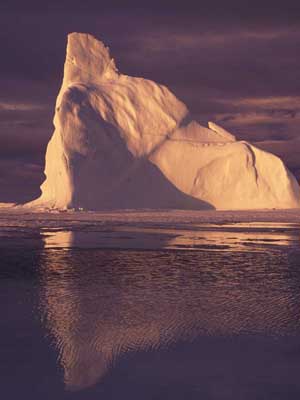A new study published in the journal Nature Geoscience suggests that the temperature rises of recent decades seen in the Arctic and the Antarctic are due to human activities.
According to Nathan Gillett and colleagues at the University of East Anglia, Norwich, UK, the patterns observed as temperatures change in Antarctica are much less clear than those determined for the Arctic warming signal. However, the new research reveals that the temperature is certainly rising in those regions of Antarctica for which data are available and that this warming is due to anthropogenic emissions of greenhouse gases and other pollutants.

Dr Nathan Gillett
Gillett, who is now working at Environment Canada, carried out the research with UEA’s Alexey Karpechko and Peter Stott of the Met Office Hadley Centre, in Exeter, UK. They compiled records of air temperature across the Arctic and Antarctic regions from 1900 and beyond. They then compared the actual observed temperature patterns with those produced by numerical simulations – climate models, in other words – with and without emissions due to human industrial, transport, and other activities that generate a net release of greenhouse gases into the atmosphere.
The team found that only those climate change models that included human influences, such as the emission of carbon dioxide and chlorofluorocarbons (CFCs), were able to reproduce the observed temperature trends. This side-by-side comparison of simulated climate data with direct observational results has enabled the group to conclude that human activities are causing warming at both the north and the south poles.

Iceberg off Baffin Island, Nunavut, Canada, showing foreground meltwater ponds. (Credit: Sandy Briggs.)
The polar regions have long been expected to warm strongly as a result of anthropogenic climate change, because of the positive feedbacks associated with melting ice and snow, explain the researchers. The climate of Antarctica, and the Arctic, are not of parochial interest to penguins and polar bears, respectively. Indeed, the continent has vast reserves of water locked up in its ice sheets. The melting of this huge volume of ice should temperatures continue to rise will raise sea levels across the globe, inundating low-lying coastal regions.
Writing in an editorial piece for the journal, Andrew Monaghan, of the National Center for Atmospheric Research, in Boulder, Colorado, USA, agrees with the team’s conclusions. Their work demonstrates convincingly what previous studies have suggested, that humans have indeed contributed to warming in both the Arctic and Antarctic regions, he says.
Nathan P. Gillett, Dáithí A. Stone, Peter A. Stott, Toru Nozawa, Alexey Yu. Karpechko, Gabriele C. Hegerl, Michael F. Wehner, Philip D. Jones (2008). Attribution of polar warming to human influence Nature Geoscience, 2008, 1 (11), 750-754 DOI: 10.1038/ngeo338
Further reading
Dr Nathan Gillett homepage
http://www.cccma.ec.gc.ca/people/ngillett.shtml
Suggested searches
climate change
sea level change